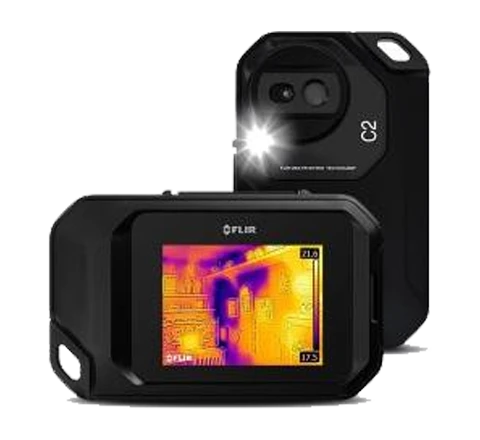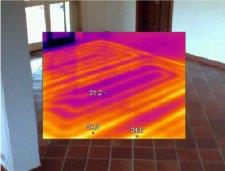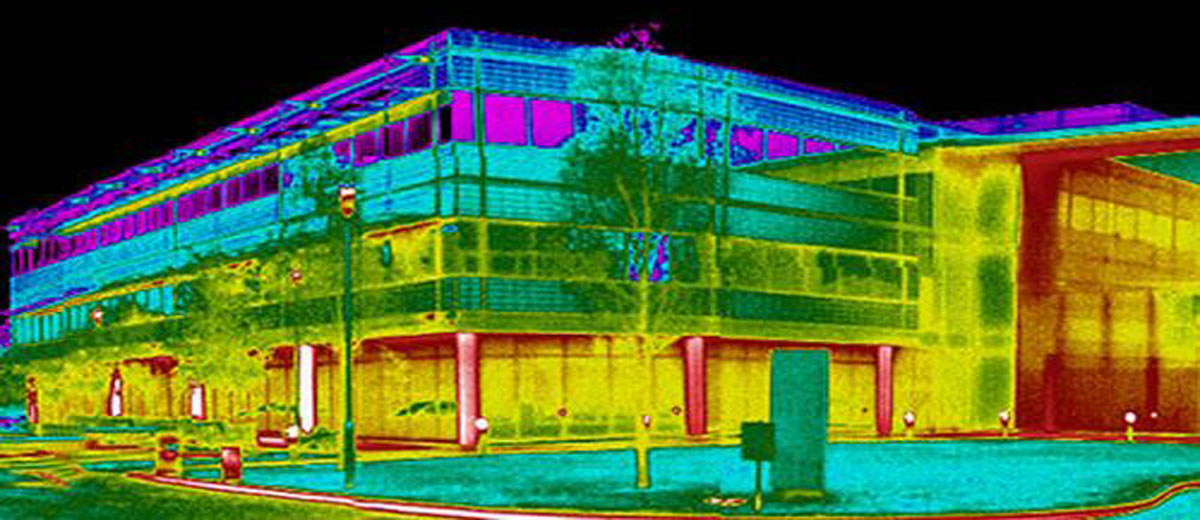 Thermal imaging can detect heat through walls and unsafe mechanical installations that traditionally cause difficulties in detecting an issue in an inspection. With infrared vision, Cornerstone Building Inspections brings you peace of mind by leaving no stone unturned.
Thermal imaging can detect heat through walls and unsafe mechanical installations that traditionally cause difficulties in detecting an issue in an inspection. With infrared vision, Cornerstone Building Inspections brings you peace of mind by leaving no stone unturned.
Thermal imaging works by using a ‘camera’ which senses heat and radiation. Thermal imaging is a non-invasive method of detecting water ingress issues within building envelopes such as walls, floors and ceilings. At Cornerstone Building Inspections, we use the FLIR C2 Compact Thermal Images with MSX, 4800 Pixels (80 x 60) Temperature range -10 to 150°C. The device is utilized extensively when determining if a wet, damp environment exists as in a below grade basement suite or recreation/media room, for example. It is also a perfect device to determine if a wet, damp environment exists behind ceramic tiled bathroom and shower enclosures.
Such damp environments can strongly be related to mold content and emissions within the locations of concern. There is no alternative but to remove the components and enable further investigation for environmental purposes.

- In floor hydronic (radiant heating) is prone to inconsistencies (example: cold spots). The thermal imaging will locate those flashpoints of concern. Specifically, within the heating coils which have become compromised within concrete floor slabs.
- Older homes were serviced with an in-floor heating coil known as polybutylene (synthetic polymer) material. Such material can be associated with the absence of an oxygen barrier. Therefore known to fail prematurely due to the high acidic water content within the GVRD water supply.

- Other contributing factors associated with thermal imagery is determining insulation values within attics and walls.
- Again, let's not forget wet, damp environments can be associated with mold and mildew. Exposure over time may become detrimental to one's family's health. Infra red thermal imagery can be relied upon for 99.5% of the time.
- Additionally, heat loss within an attic is a common occurrence, costing money and contributing to accelerated emissions into the environment. At present there are Provincial government grants available in relationship to increasing energy efficiency within the home and workplace. However, to be eligible the status requires a written confirmation from a certified government licensed inspection company.

- The electrical code is specific. Electrical code upgrades and improvements will be subject to permitting by the local authorities. Past experience has proven to Cornerstone that seldom do owners of single-family homes retain the services of a licenced bonded electrician to enact such tasks.
- The thermal imaging camera will detect unsafe situations (example: breakers which are overheating due to poor, unsafe wiring practices) or issues associated with controversial aluminum wiring. Upon obtaining content insurance the underwriter of the policy will require confirmation of aluminum wiring installations. Few insurance underwriters will not insure homes/buildings containing controversial aluminum wiring.
- It's in your best interest to establish if dwellings are serviced with the nature of wiring in question.

- Perfect for determining blockage in drain waste vent ("DWV") systems and domestic water supply lines within walls which may be leaking.
- Approximately 95% of the water supply lines within the dwelling are located within walls and ceilings. Thermal imagery is an indispensable tool when attempting to uncover hidden leaks and pinpoint the exact location for repair.
Note: Thermal imagery is a standard feature incorporated in the inspection process. The photographic evidence is time stamped for convenience. It certainly will assist potential purchasers and property owners of the hidden deficiencies which may be health related.
Cornerstone Building Inspections is a registered inspector and member of the Home Inspectors Association of British Columbia. Contact us today for your pre-listing inspection – 604.618.6870


 Thermal imaging can detect heat through walls and unsafe mechanical installations that traditionally cause difficulties in detecting an issue in an inspection. With infrared vision, Cornerstone Building Inspections brings you peace of mind by leaving no stone unturned.
Thermal imaging can detect heat through walls and unsafe mechanical installations that traditionally cause difficulties in detecting an issue in an inspection. With infrared vision, Cornerstone Building Inspections brings you peace of mind by leaving no stone unturned.


